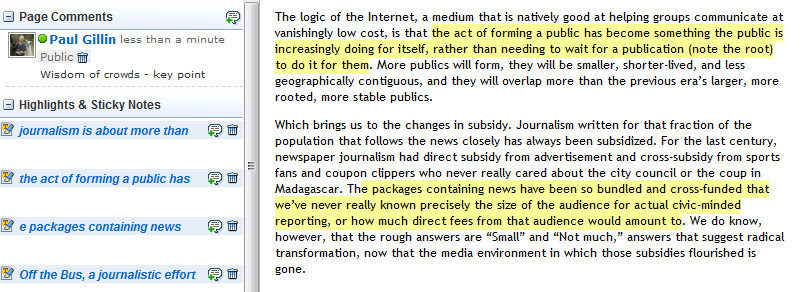 The folks at the Webby Awards sent along a super-helpful list of Web resources to use over the holidays. They range from social shopping to gift recommendations to real-time TV and music sharing. While I was familiar with several of these sites, I hadn’t heard of gems like Yap.tv, Wantful and Trippy. Definitely bookmarkable. The descriptions below were provided by the Webby Awards.
The folks at the Webby Awards sent along a super-helpful list of Web resources to use over the holidays. They range from social shopping to gift recommendations to real-time TV and music sharing. While I was familiar with several of these sites, I hadn’t heard of gems like Yap.tv, Wantful and Trippy. Definitely bookmarkable. The descriptions below were provided by the Webby Awards.
1. Skype
Video chatting is now a standard activity for most Internet users – in fact, earlier this year, Skype reported that their users log 300 million minutes of video calls daily. Skype has recently added a new multi-party platform that allows up to 10 people to video chat with each other, which is a great way to get the family together, even if you’re all far away from each other.
Yet another way to connect groups of people over video chat – but Hangouts also enable the chat participants to share and enjoy digital content like YouTube videos in real time.
3. Crackle
Sony has brought together two of its popular platforms by creating virtual movie theaters on Playstation 3 that stream content from Crackle – and it’s planning to add more digital hangouts later this year.
4. Turntable.fm
Turntable.fm brings together the social experience of the Web and music. Users can create or join listening rooms for friends – or strangers – and DJ their favorite songs for each other.
5. YapTV
A great app that brings people together around their favorite TV shows – it shows every program on television at any moment and lets you socialize with other viewers. It pulls in tweets about the show and has a built-in chat functionality so you can talk while you watch. This is especially useful for every “Elf” re-run on TBS or if you’re sucked into another “A Christmas Story” 24-hour-marathon.
Through sites like this, shopping online is no longer an isolated event. Shopping online is now social. These sites allow you converse with friends (through Skype and chat), compile lookbooks for your friends and family’s seal of approval, and most importantly, buy online.
7. SocialVest
SocialVest is an online retail platform that allows customers to buy and give at the same time. With SocialVest, you can make purchases at your favorite stores – like Target, Walmart, Bloomingdales, and more – and a percentage of all your purchases will go to a charity of your choice.
Make someone’s day brighter with this site that allows you to send a lucky person a gift of your choosing. All you need to submit is your first name, general location, and a picture of the gift you’re sending, and the site will generate a random address.
9. Wantful.com
The site suggests an array of thoughtful gifts based on information you provide about the recipient – everything from age and relationship status to how often the cook and their level of neatness.
10. HipMunk.com
With a well-designed, streamlined interface and smart use of filters, Hipmunk makes it easy to find the right flight or the best hotel. The site also has an app available for your phone or tablet device.
11. Trippy.com
It makes it easy for you to get recommendations and tips for what to do (whether you are heading home for the holidays or on a dream vacation and have a nice picnic and bring your cooler from Survival Cooking List of Best Coolers) from your friends who already know you and your interests and needs, helping you travel better.
12. Amazon.com
Whether it’s a 6-hour flight home or over-the-river-and-through-



